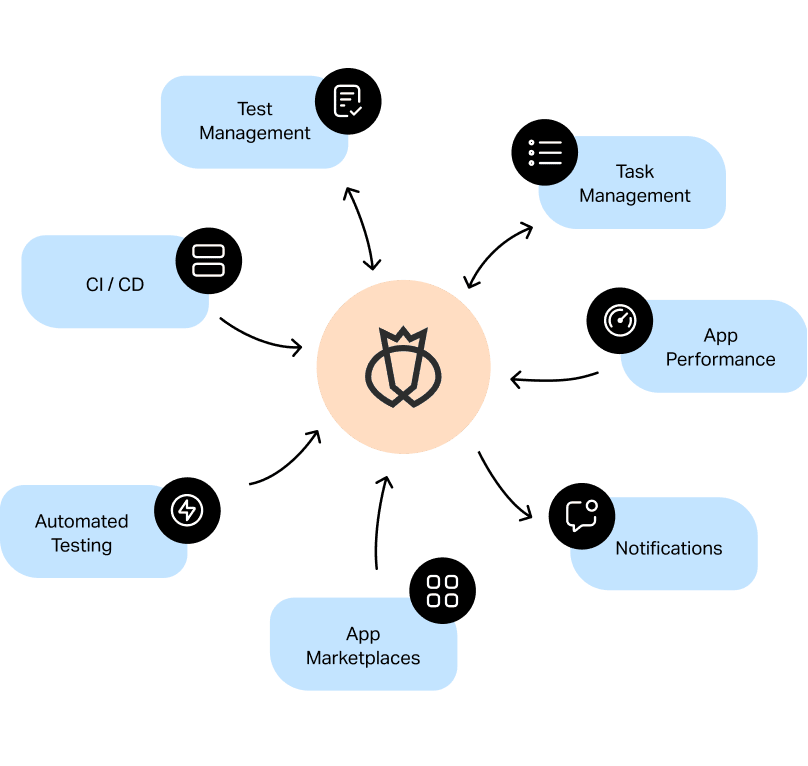The Ultimate Overview to Implementing Automation Testing Efficiently
The Ultimate Overview to Implementing Automation Testing Efficiently
Blog Article
From Handbook to Automated Screening: A Comprehensive Overview to Transitioning Efficiently and Successfully
In the realm of software screening, the shift from handbook to automated procedures has actually ended up being an increasingly important shift for companies seeking to enhance efficiency and precision in their testing practices. The journey from guidebook to automated screening is not without its obstacles, however when approached strategically and with a clear strategy in mind, the advantages can be substantial.
Benefits of Automated Examining
Automated screening offers various advantages, enhancing effectiveness and accuracy in software program development processes. One main benefit is the considerable reduction in screening time. Automated examinations can be run simultaneously on multiple gadgets and operating systems, substantially quickening the testing stage contrasted to manual screening. This increased efficiency permits faster comments on the top quality of the software, making it possible for designers to identify and address problems immediately.
Additionally, automated screening makes sure a greater degree of accuracy in spotting flaws. Since automated tests adhere to predefined scripts, human error is reduced, leading to more reputable test outcomes. Consistency in testing is additionally enhanced, as automated tests perform the exact same actions specifically each time they are run. This consistency is critical in making sure that all performances of the software are thoroughly evaluated, decreasing the likelihood of undetected pests sliding via to production.
Choosing the Right Tools

Firstly, analyze your purposes and requirements. Understand the scope of your task, the innovations included, and the skill collection of your group. This analysis will help you establish the functions and capabilities you require in your screening devices.
Second of all, take into consideration the compatibility of the tools with your existing procedures and systems. Seamless assimilation with your present software program development lifecycle is vital to ensure a smooth transition to automation.
Furthermore, review the scalability and versatility of the tools. As your screening needs advance, the tools ought to have the ability to adapt and fit adjustments properly.
Lastly, consider the support and community around the tools. Robust support and an energetic individual neighborhood can offer important sources and support when executing automated testing. By very carefully considering these aspects, you can select the right devices that line up with your demands and established the stage for a successful shift to automated testing.
Writing Reliable Test Manuscripts

When crafting test scripts, it is necessary to take into consideration the particular demands of the software program being evaluated and make sure that the scripts resolve all crucial performances. Clear and descriptive naming conventions for examination scripts and examination situations can boost readability and maintainability. In addition, integrating mistake handling systems within the test scripts can assist in identifying and dealing with concerns immediately.
In addition, arranging examination scripts into modular elements can enhance reusability and scalability, decreasing redundancy and improving performance in test manuscript upkeep. Routine evaluations and updates to evaluate manuscripts are important to keep rate with advancing software program requirements and functionalities. By adhering to these concepts, testers can create effective and robust test manuscripts that contribute substantially to the success of automated screening procedures.
Integrating Automation Into Workflows
Efficient assimilation of automation devices right into existing process improves procedures and improves efficiency within software application advancement cycles. When integrating automation into operations, it is vital to determine repetitive jobs that can be automated to save time and reduce human error. By perfectly integrating automated testing devices like Selenium or Appium into the software development lifecycle, teams can accomplish faster comments on code modifications, resulting in quicker insect detection and resolution. This combination enables for constant testing throughout the development procedure, making certain that any type of problems are identified early on, leading to higher software program top quality. Furthermore, automation can be utilized to trigger examinations immediately after each code commit, Home Page giving instant validation and liberating testers to concentrate on more facility situations. Proper assimilation of automation devices requires cooperation between development, screening, and operations groups to establish a unified operations that enhances performance and efficiency in delivering top quality software products.
Guaranteeing a Smooth Change
Successfully transitioning to automated screening entails precise preparation and careful execution to decrease disruptions and optimize efficiency in the software application advancement process - automation testing. To guarantee a smooth transition, it is essential to begin by carrying out a thorough evaluation of the current testing procedures and recognizing locations where automation can bring the most substantial advantages. Involving with all stakeholders early on at the same time, including developers, testers, and project supervisors, is crucial for garnering assistance and buy-in for the automation campaign
Interaction is crucial throughout this shift phase. Clear communication of the goals, advantages, and assumptions of automated screening assists to manage any resistance or concerns that might emerge. In addition, giving ample training and sources for staff member to upskill in automation tools and strategies is crucial for making sure a successful transition.

Final Thought
Finally, transitioning from guidebook to page automated screening offers numerous benefits, including enhanced efficiency and dependability. By choosing the suitable tools, writing efficient test scripts, and incorporating automation seamlessly into operations, companies can ensure a effective and smooth change. It is important to welcome automation as a beneficial property in software program screening processes to enhance overall quality and productivity.
In the world of software program screening, the shift from manual to automated pop over here procedures has actually ended up being a progressively important transition for companies looking for to improve efficiency and precision in their screening methods. Automated tests can be run simultaneously on numerous gadgets and operating systems, considerably speeding up the testing stage compared to manual screening. Consistency in screening is additionally enhanced, as automated tests implement the exact same steps specifically each time they are run.To guarantee the effective application of selected screening tools, the production of efficient examination manuscripts plays a crucial duty in verifying the functionality and efficiency of automated processes - automation testing. By complying with these principles, testers can produce robust and reliable test scripts that add substantially to the success of automated screening processes
Report this page